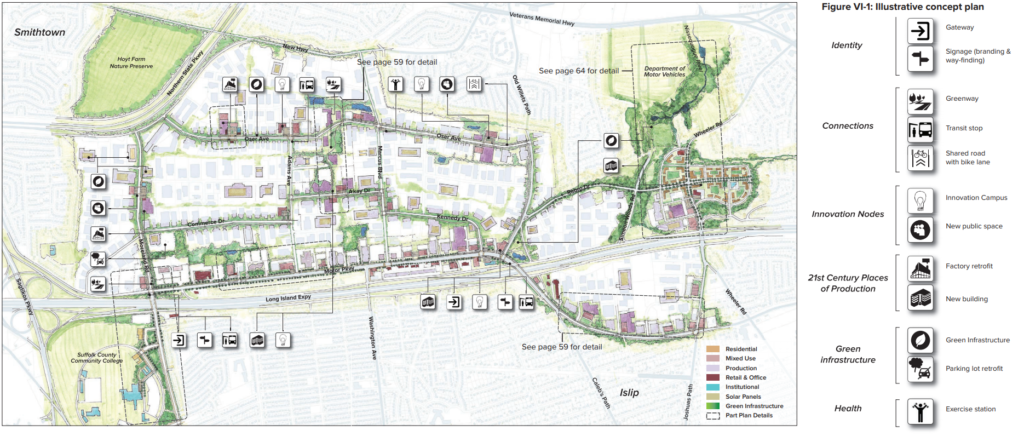SUFFOLK CLOSEUP - "No Woman Has Ever" May Become History
 Wednesday, July 22, 2020 at 9:44PM
Wednesday, July 22, 2020 at 9:44PM SUFFOLK CLOSEUP
By Karl Grossman
A century ago—in 1920—women were given the right to vote in all the United States with passage of the 19th Amendment to the Constitution. But it’s taken time in Suffolk County and elsewhere for women to be elected to public office. The results of the Democratic primary in Suffolk this year for aspirants to run in the November election show further gains for women here.
No woman has ever represented Suffolk County in the U.S. House of Representatives. This could now change with Nancy Goroff winning the Democratic nomination in the lst Congressional District, and Jackie Gordon winning in the 2nd C.D. and she is an African-American and no Black person has ever been elected to the House from Suffolk.
The lst C.D. includes the East End towns, all of Brookhaven, much of Smithtown and a slice of Islip Town. The 2nd embraces most of Islip, all of Babylon Town and continues into southeastern Nassau County.
Professor Goroff of Stony Brook, a political unknown who never ran for or held elective office, achieved a breakthrough with a primary campaign strong on advertising on TV and social media. On leave as chair of the Chemistry Department at Stony Brook University, she won narrowly over businessman Perry Gershon of East Hampton and Suffolk Legislator Bridget Fleming of Noyac.
As she did in the primary race, Dr. Goroff can be expected in the general election campaign to emphasize incumbent Republican Lee Zeldin’s close personal and political ties to President Donald Trump and her background as a scientist. She has repeatedly declared that the House needs scientists as members notably because of the Covid-19 pandemic and the climate crisis.
It will not be an easy political road as, according to a knowledgeable political source, polls taken have reflected Mr. Zeldin ahead of each of the three Democratic rivals by at least seven percentage points. Will Dr. Goroff be able to pull ahead with Election Day November 3?
Mr. Zeldin, a Shirley resident and attorney, meanwhile, can be expected to stress federal monies he has brought home to the district as well as his background in the U.S. Army rising to the rank of lieutenant colonel.
Regarding military background, Ms. Gordon was a lieutenant colonel in the Army, too, and a combat veteran. She left her seat on the Babylon Town Board, which she held from 2007 to early this year, to run for the House seat. A Copiague resident, she won the primary handily over attorney Patricia Maher of East Meadow.
Ms. Gordon will face GOPer Andrew Garbarino, a state assemblyman from Bayport, the son of Islip Town Republican Chairman William Garbarino. In a Republican primary, he beat Mike LiPetri, also a state assemblyman, from Massapequa. The seat has been held by Republican Peter King, a 14-term incumbent from Seaford who is retiring. Likely the magic touch: Mr. King endorsed Mr. Garbarino to replace him.
In the lst Senatorial District, Laura Ahearn won in a five-way scramble. She is an attorney from Port Jefferson, founder of the Crime Victims Center and founder and executive director of Parents for Megan’s Law. The district includes all the East End towns and a large part of Brookhaven. She won over Valerie Cartright, a member of the Brookhaven Town Board from Port Jefferson Station; Nora Higgins a nurse from Ridge; Skyler Johnson, a 20-year-old college student from Mount Sinai; and Tommy John Schiavoni of Sag Harbor, a member of the Southampton Town Board. Ms. Ahearn in the general election will face for Senate Anthony Palumbo of New Suffolk, now an assemblyman. Senator Kenneth LaValle of Port Jefferson, first elected to the seat in 1977, is retiring.
And Laura Jens-Smith who in 2017 was elected Riverhead Town supervisor to become the first woman to win that post, could be back in government. A nurse from Laurel, she lost the supervisor’s spot after two terms. To run for the 2nd Assembly District seat held by Mr. Palumbo, she won in the Democratic primary over William Schleisner of Sound Beach, a broadcast operations coordinator. The district takes in Southold and Riverhead towns and part of Brookhaven. She’ll be facing GOPer Jodi Giglio of Riverhead, a member the Riverhead Town board. Ms. Jens-Smith says she has been made “the Comeback Kid.”
Besides the lst and 2nd C.D.s, the other Congressional District that includes Suffolk is the 3rd. It takes in Huntington, the part of Smithtown not in the lst C.D. and, like the 2nd C.D., links into Nassau County, its northeastern portion, and also takes in part of Queens. Democratic incumbent Thomas Suozzi of Glen Cove, a former Nassau County executive, was the winner in the Democratic primary. He won over Melanie D’Arrigo of Port Jefferson, who described herself as a “grassroots advocate” and “progressive fighter,” and attorney Michael Woodstock of Great Neck. Mr. Suozzi in the general election will face Republican George Devolder-Santos, a financier from Whitestone, the son of immigrants from Brazil.
No woman ever represented Suffolk in the State Senate—the situation that has continued in the House—until, in 2018, Monica Martinez of Brentwood, a Suffolk County legislator and educator, was elected senator in Suffolk’s 3rd S.D.
When I began as a journalist in Suffolk in 1962, the county’s governing body was the Suffolk County Board of Supervisors which consisted of the supervisors of each of Suffolk’s 10 towns—all white men. There was never a woman or an African-American or Latino on the panel in its 287 years, only white men. It was replaced by the Suffolk County Legislature in 1970 which has included women—Sondra Bachety of Deer Park and Maxine Postal of Amityville became presiding officers—and Latino and African-American legislators including DuWayne Gregory of Copiague, its first Black presiding officer.
 Karl Grossman is a veteran investigative reporter and columnist, the winner of numerous awards for his work and a member of the L.I. Journalism Hall of Fame. He is a professor of journalism at SUNY/College at Old Westbury and the author of six books.
Karl Grossman is a veteran investigative reporter and columnist, the winner of numerous awards for his work and a member of the L.I. Journalism Hall of Fame. He is a professor of journalism at SUNY/College at Old Westbury and the author of six books.














